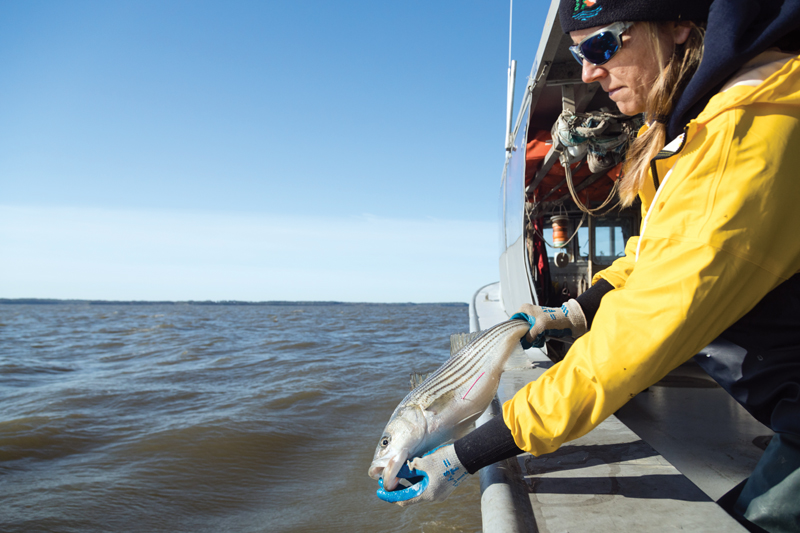Another hot Bay summer for sailors... and for fish
As cooler September temperatures and fresher breezes come our way, the Chesapeake is winding down its latest version of “Hot Bay Summer.” Chesapeake sailors are familiar with “it’s not the heat, it’s the humidity” when talking about the typical Triple H days of August (hazy, hot, and humid).

Certainly the “nothing will ever dry no matter how long I hang it on the railing” feeling is one that summer sailors know well. Living in a household where more fishing happens than sailing, I wondered how fish species are impacted by warming Bay temperatures due to the climate crisis.
Local water temps are rising
In the Chesapeake the average summer water temperature has risen almost two degrees due to warming air temperatures. At the time of this writing, the Magothy River measured surface temperatures of 90 degrees. This area, the Mid Atlantic Bight, has water temperatures that are increasing two times the global average. Warming water temperatures in North America’s largest estuary impact fish species for a variety of reasons:
- Warmer water holds less oxygen than colder water.
- Warmer water increases the toxicity of some heavy metals.
- Warmer water promotes harmful algal blooms which contribute to lower oxygen levels in the water.
- Warmer waters disrupt spawning (striped bass spawn three weeks earlier than 50 years ago) and predator/prey relations, which impacts the entire food web.
- Warmer waters can impact some species’ growth negatively.
- Heat events can cause mass mortality.
- Warmer water negatively impacts submerged aquatic vegetation which provides critical habitat and oxygen.
- Warmer water can double a fish’s heart rate (rockfish in particular) and make it more difficult to swim, forage, and resist disease.
The Virginia Institute of Marine Science has been conducting research on different fish species’ preferences for different water temperatures. Their focal species are Atlantic croaker, summer flounder, spot, and weakfish. They predict that the Bay will be used less by many species that will be forced to migrate north in search of cooler more oxygen rich waters. This will have a profound impact on the entire food chain. Many scientists predict there will be a “regime shift,” and the Chesapeake will look more like estuaries in North Carolina. Already there is a nascent shrimp industry in Virginia, as shrimp move north as the waters warm.
I paid a visit to our local tackle shop in Pasadena, MD, to chat with owner George Sarvinas and get some on the ground anecdotes regarding changes that the recreational fishing industry has experienced. George has owned Fishbones Bait and Tackle for five years and has lived and fished on the Magothy River for 40 years.
George confirmed that he has observed “dramatic changes” in species’ composition over the years. From earlier spawning of rockfish to the disappearance (and now possible reappearance) of croakers in the Upper Bay, rising temperatures are changing the food web. Bluefish are fewer and puppy drum and puffer fish are being caught north of the Bay Bridge. While it may seem difficult for sailors to appreciate (unless they are multi-tasking and also fishing), the Chesapeake is changing rapidly.
How can sailors help?
Keep sailing! Reducing our carbon footprint is something sailors do best! Calculate your carbon footprint at: nature.org/en-us/get-involved/how-to-help/carbon-footprint-calculator.
by Pamela Tenner Kellett




